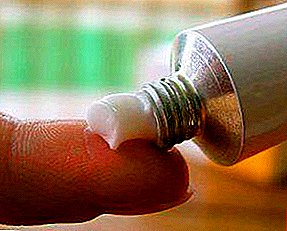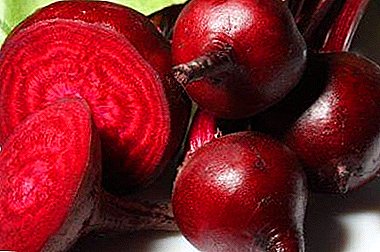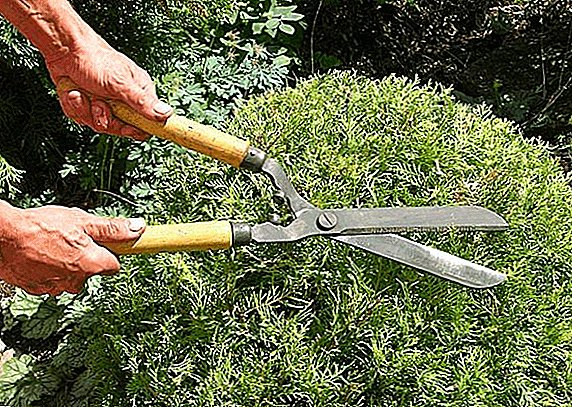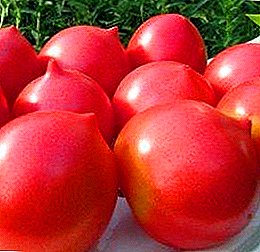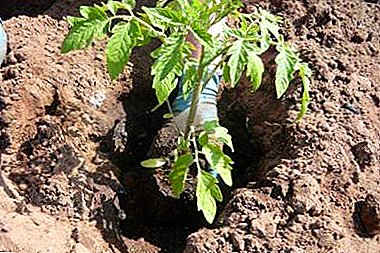 Cissus is an original indoor plant, popular with both beginners and experienced flower growers. Unpretentious, creeping and tenacious growth allows everyone to break their own vineyard in the apartment. But before planting cissus at home, you should find out in more detail what this flower is and how to care for it.
Cissus is an original indoor plant, popular with both beginners and experienced flower growers. Unpretentious, creeping and tenacious growth allows everyone to break their own vineyard in the apartment. But before planting cissus at home, you should find out in more detail what this flower is and how to care for it.
Description and common species
Cissus belongs to the family Grape, so almost all of its representatives are a vine with whole or dissected leaves. Like the usual grapevine, cissus grows up, clinging with antennae to the supports next to it.
It blooms at home is not often and not very nice - its flowers are small and unpresentable. Botanists number over 300 species of cissus, but only some of them are used as indoor plants. Most often, you can meet the Antarctic cissus, rhomb and many-colored.
To unpretentious indoor plants also include such as airshyzon, zephyranthes, chlorophytum, sansvevera, cacti, hibiscus, hoya, spathiphyllum.
Cissus Antarctic or Kangaroo Liana (Cissus antarctica)
It is an evergreen vine with jagged leaves resembling birch leaves, 12 cm long. It tolerates dry soil, but needs light and does not tolerate elevated air temperature. 
Cissus rhombus or rhombic (Cissus rhombifolia)
Liana with long, thin stems, reaching 1.5-2 meters in length. It has compound leaves consisting of three diamond-shaped leaves. Very unpretentious, well tolerates temperature extremes, lack of watering, shading and direct rays of the sun. 
Cissus multicolor (Cissus discolor)
More whimsical view of cissus; its leaves are dark green with silver spots, the reverse side is pink. In winter, sheds leaves that grow in the spring. Requires a low temperature - 15-20 ° C, and high humidity of the soil and air. 
Optimal conditions for growing
Cissus grow quickly and abundantly. In favorable conditions, their development is practically unstoppable, shoots quickly twist around the supports and create a dense green cover. Therefore, they are often used for landscaping winter gardens. Unsophisticated tsissus does not require special care and care.
Did you know? Cissus got its name from the Greek ivy name "kissos". For his characteristic appearance, he is often referred to as “indoor (homemade) grapes” or “birch”.
Location and lighting
Indoor grapes grow well on the windows, but the direct sunlight tolerates very poorly. Therefore, it must be shaded from the bright sun. Like the plant in the kitchen and near sources of artificial light.
In the warm season, gratefully responds to take-out to a balcony or veranda. But when the onset of cold weather you need to promptly hide the plant in the room. 
Temperature
Indoor grapes are not picky about indoor temperature - enough to maintain 18-20 ° C all year round. In spring and summer, when it is rather hot, it is not advisable to exceed a temperature of 25 ° C.
Cissusa can tolerate high temperature and dryness for some time, but it is better not to expose them to such extreme loads. In winter, you must ensure that the temperature in the room does not fall below 16 ° C - this is the lower limit of exposure. Although the Antarctic tsissus can tolerate and 5-10 ° C.
What care is required
Caring for cissus is not complicated and does not require special tools and knowledge. It is necessary to moisten the soil and air in a timely manner, make the plant a support and periodically cut off overgrown vines.
Watering
The number of waterings and sprays will vary depending on the season. In summer and spring, during periods of high air temperatures and dryness, the number of irrigations and the volume of water should be increased. It is worthwhile to focus on the state of the soil in the tank with cissus - water should be watered as the soil dries. 
Important! Watering should be carried out with soft settled water.
In winter, the growth of leaves slows down, the evaporation of water almost stops, and accordingly water consumption also becomes less. In this case, you need to water less frequently and not so abundantly. Again, a signal to watering will be the condition of the soil where cissus grows.
Air humidity
A long stay in a dry room will not bring anything good to the cissus, so once or twice a week the leaves should be sprayed with water. In the summer, you can do it a little more often, especially if the temperature in the room is quite high.
In winter, spraying can be reduced or stopped altogether. The exception is multi-colored cissus, it needs to be sprayed every day.
Top dressing
Watering can be combined with root dressing. For this, any complex fertilizers for non-flowering plants or universal fertilizers for complex flowers, such as Clean Leaf, Gilea and the like, are suitable.
The universal fertilizers include such as "Stimulus", "BioMaster", "Agricola", "Plantafol", "Mortar", "Zircon".

Feed cissus should be once a week in the warm season, but in the winter fertilizers are not used.
Support
Cissus is a climbing plant, so it needs to establish a support so that the whips do not spread on the floor, but cling to the antennae and grow upwards. As a support, you can use decorative columns, trellis from wire or twine, metal mesh.
The plant will quickly cover with any whip any given support and will make of it a kind of green wall.
Pruning
Like the grapes, the cissus is periodically pruned and clipped. Pruning is carried out in the spring, with the beginning of active growth of leaves. Remove the old, dried leaves and scourge, cut off the sick parts. This is done with the aim of rejuvenating the plant and removing possible breeding grounds for diseases and pests. 
Pinching is carried out for a thicker branching cissus. In the spring, remove the point of growth of escape, and the growth does not go up, but to the sides.
Important! If plant growth has slowed in the winter, this is a natural process, but in the summer, a slowdown indicates a lack of nutrition.
All the details of transplantation
Fast-growing cissus transplanted quite often. In the first five years of life, while the plant is actively developing, transplantation is done every year, and later - once every two or three years.
As a soil for a plant, you can buy ready-made soil mixture for vines, neutral or weak acidity. You can do it yourself. To do this, take in equal shares of leaf earth, peat, humus, turf and sand. All mixed and poured into the prepared container.
The transplant procedure is carried out in the spring, after the plant leaves the hibernation. Transplantation is carried out each time in a new, more volume capacity. At the bottom of the pot poured a layer of drainage - pebbles, rubble, expanded clay. A small layer of earth is laid on top of it.
Caring for cissus: video
Then the plant is placed in a pot, gently straightening the roots in all directions. From above sleep the rest of the earth and water it.
Breeding
Indoor grapes reproduce very well and take root in a new place. Occasionally, sowing is used - the Arctic cissus reproduces well with seeds. But most often the plant is propagated by dividing the bush and cuttings.
Dividing bush
It is necessary to divide the bush during transplantation, that is, in late March - early April. The selected root with basal processes is cut with a sharp knife into several parts. Each part is placed in a separate container with the ground and watered. You can use rotors, such as Epin.
Seated rhizomes should be kept warm, at a temperature of 22-25 ° C and humid air. After three to four weeks on the surface of the earth should appear the first shoots and shoots. 
Cuttings
The easiest way, suitable even for a beginner, is reproduction by cuttings. They are harvested at the end of winter, February-March.by cutting off a suitable escape with two buds. Cuttings are planted in 2-3 pieces in a container with soil or peat and left to root.
However, cuttings of rhombic cissus are well established in water of room temperature.
Putting containers with cuttings should be in a warm place, where the temperature is constantly at a level of 20-22 ° C. It is necessary to maintain high humidity of both the soil in the pot and the air in the room. Within three weeks, the cuttings will take root and give the first shoots.
Did you know? In one season, cissus can grow by 1.5–2 meters and quickly cover a large area.

Diseases and pests
Most of the problems and illnesses in cissus are caused by improper care:
- mildew and powdery mildew - there is an excess of moisture in the ground and insufficient drainage, it is necessary to transplant;
- leaves dry, deform and bend - dry air, you need to spray the leaves from the spray;
- leaf fall begins - lack of water, you need more water;
- leaf color change, fading - The plant lacks nutrients, you need to increase the amount of top dressing or change the mineral complex.
The complex mineral fertilizers include such as "Master", "Sudarushka", "Kemira", "AgroMaster".
Most often, cissus affect scutes, spider mites and aphids. From pests effective spraying and washing the leaves with soap and water. If the situation is difficult and the soap does not help, you need to apply insecticides, such as "Fitoverm" or "Lightning."
So, in general, care for cissus is not difficult - it is enough to water the plant in a timely manner and in the right amount, maintain the required humidity, feed and replant in spring. Indoor grapes will certainly create a good atmosphere in the house and will please the eye with green leaves.
Feedback from network users
Let's see what happens. But in my opinion, he himself would not have got out. Probably worth the sandpaper shreds, who knew that they were so thick.





